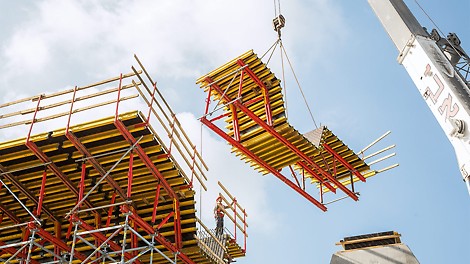במשך דורות סייעה חברת פרי לקבלנים להפוך ליעילים יותר, להעלות את רמת בטיחות העובדים באתר ולחסוך בהוצאות על ידי שימוש במערכות הטובות ביותר לצד מומחיות ומקצועיות. מערכות התבניות והפיגומים שלנו מקטינות את תשומות העבודה באתר ושירותי ההנדסה והתכנון שלנו מבטיחים יישום יעיל ועל ידי כך הגדלת התפוקה.


